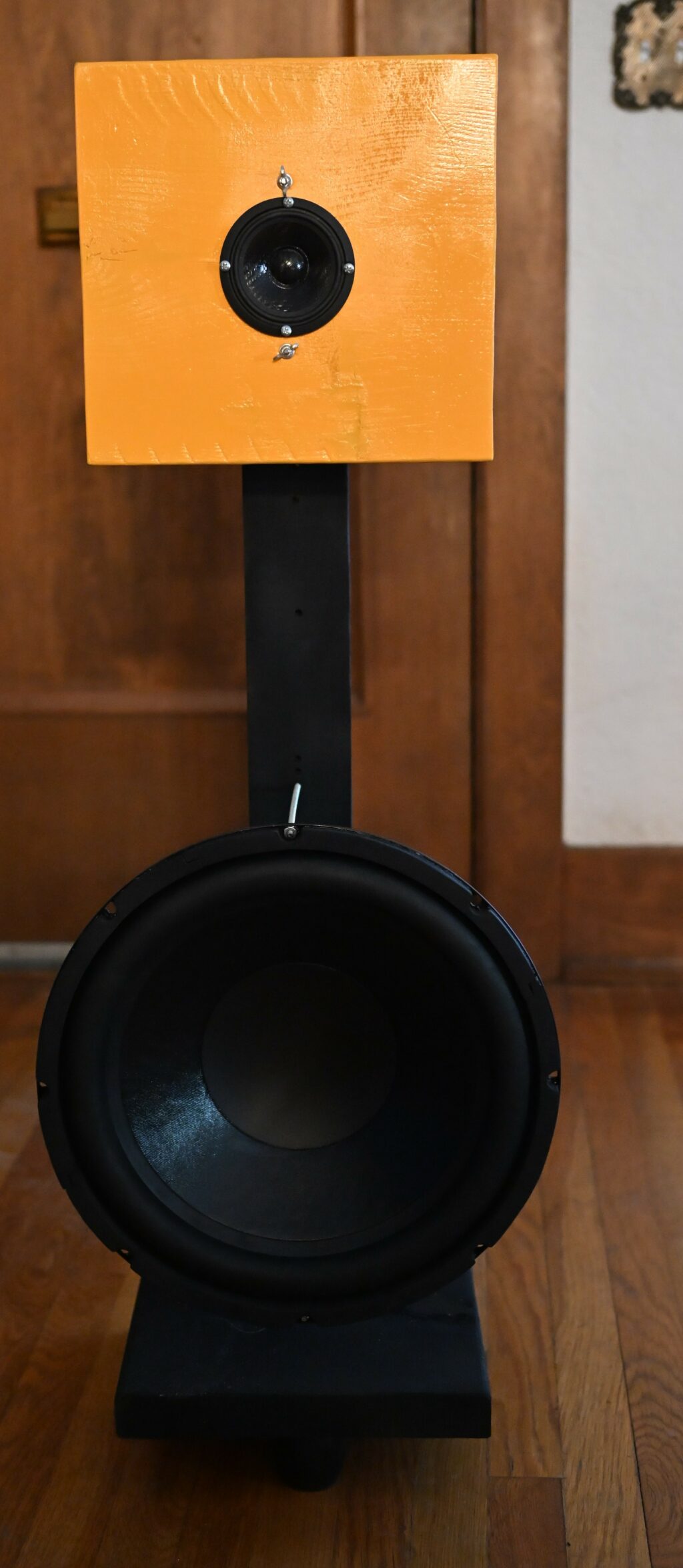
Dipole speaker system
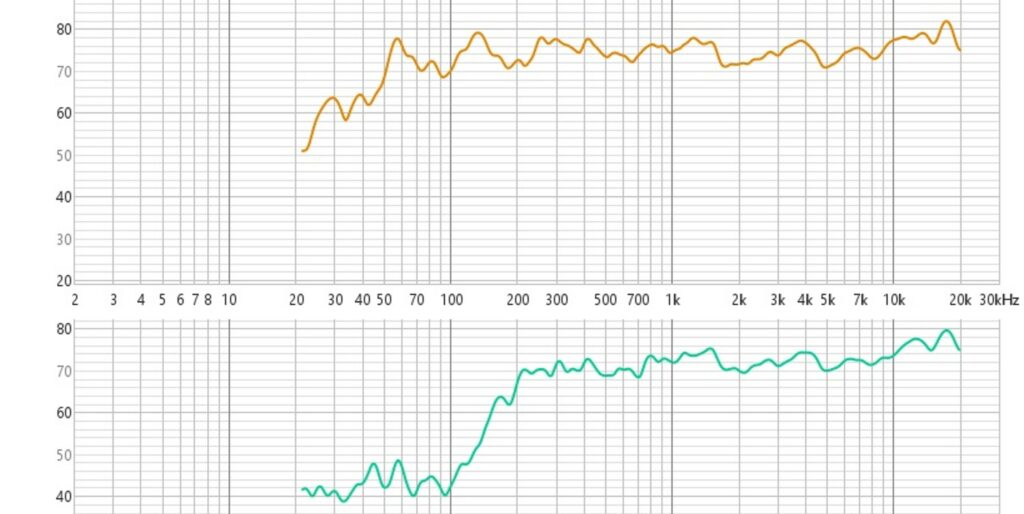
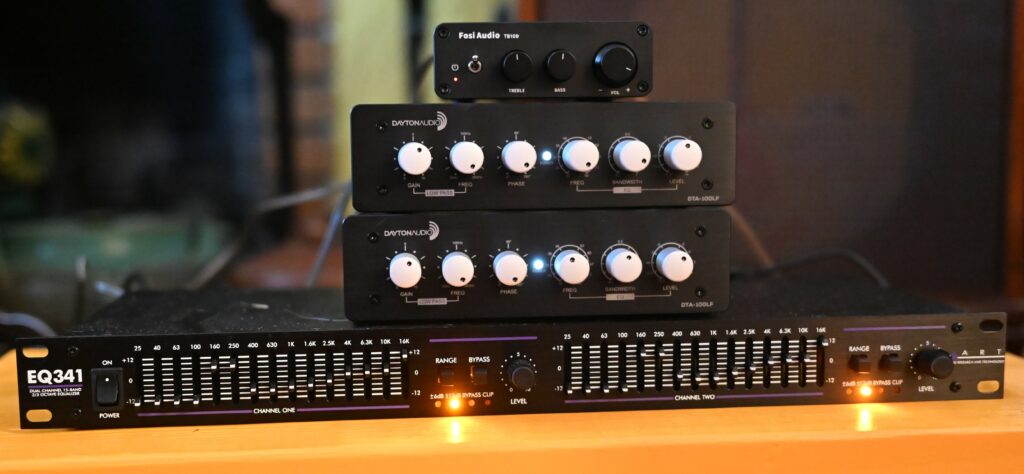
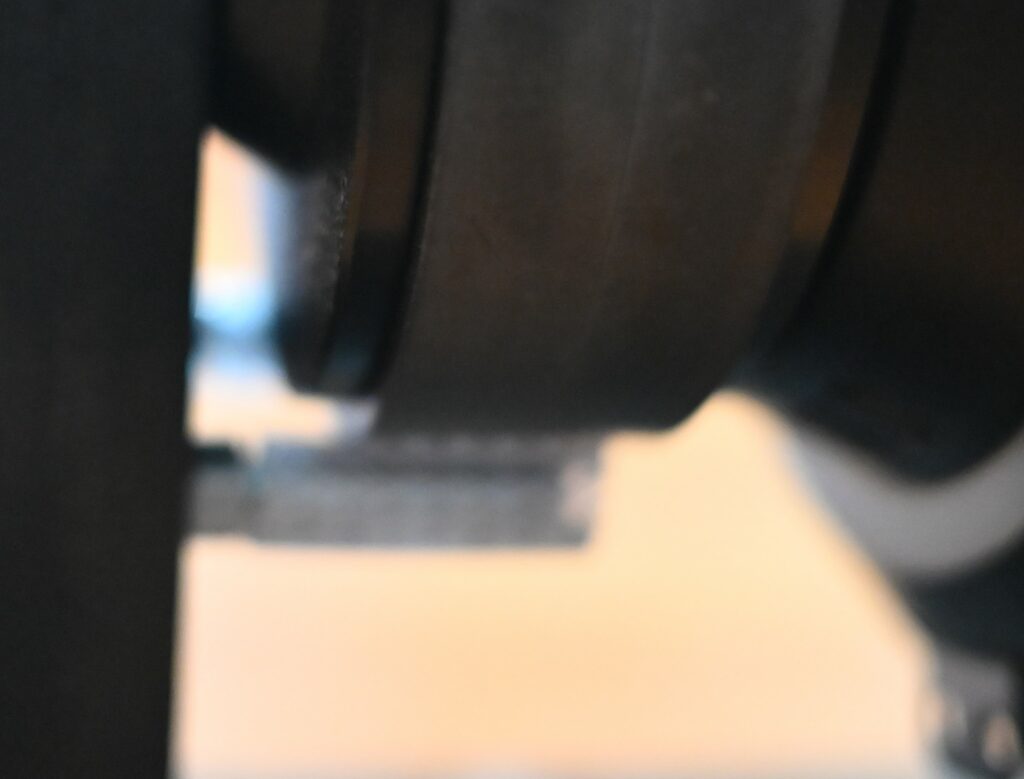
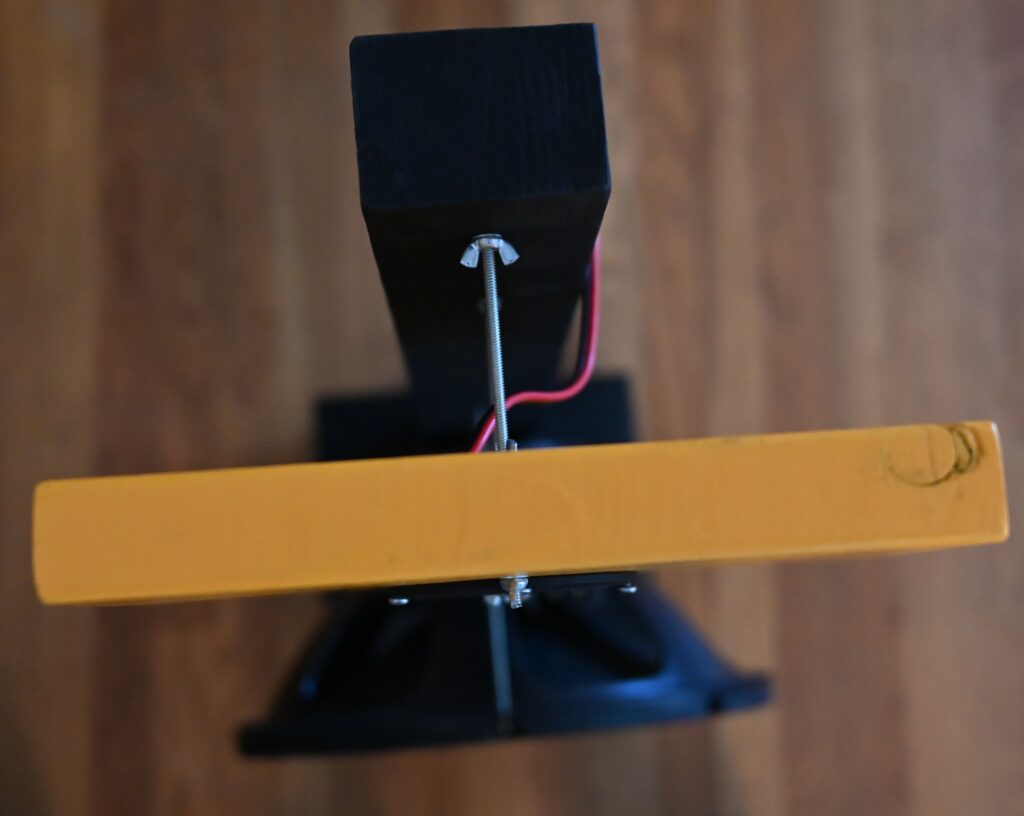
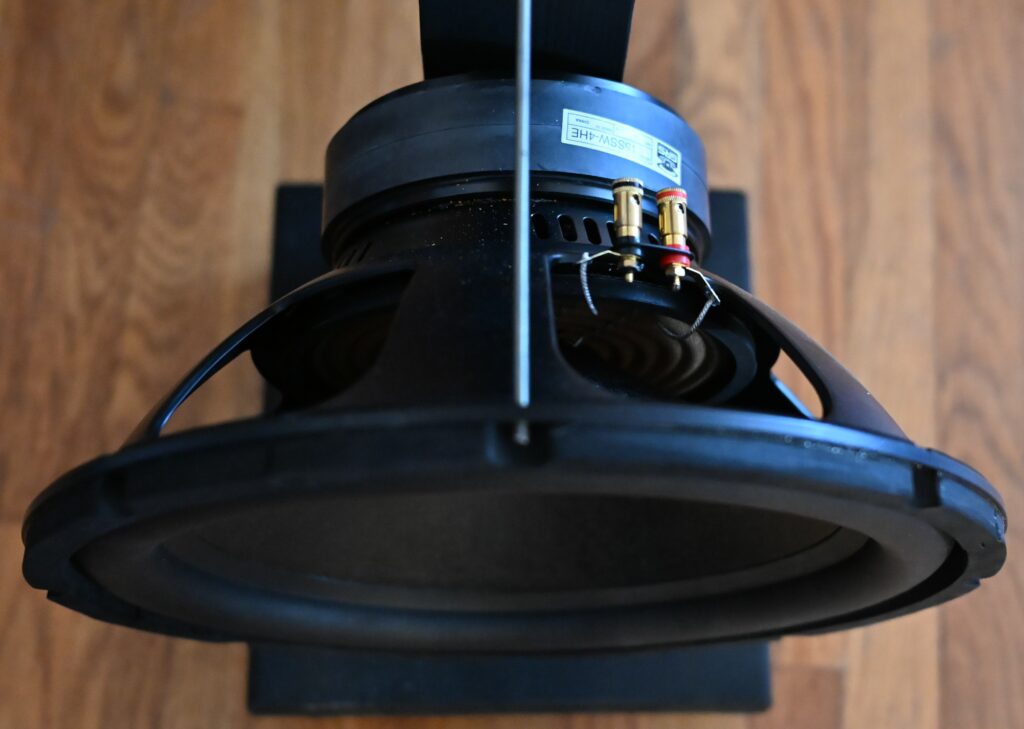
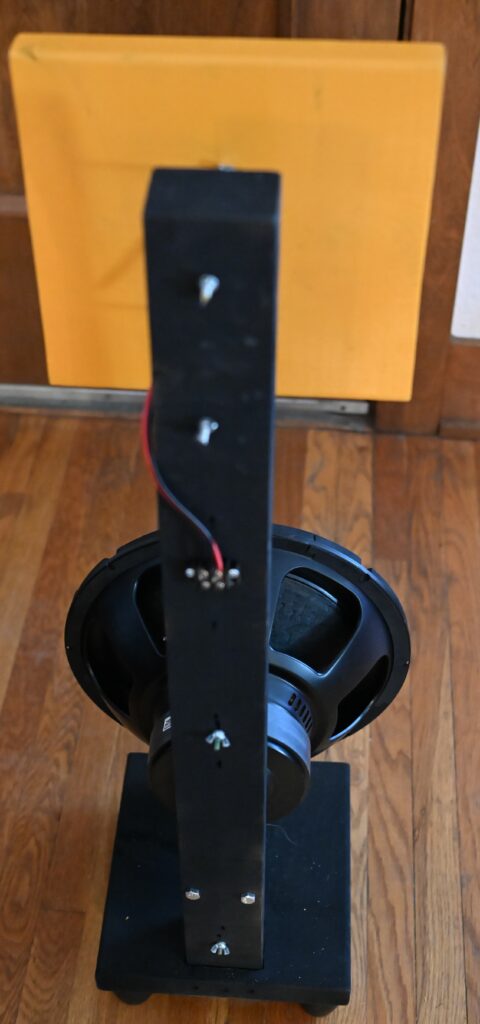
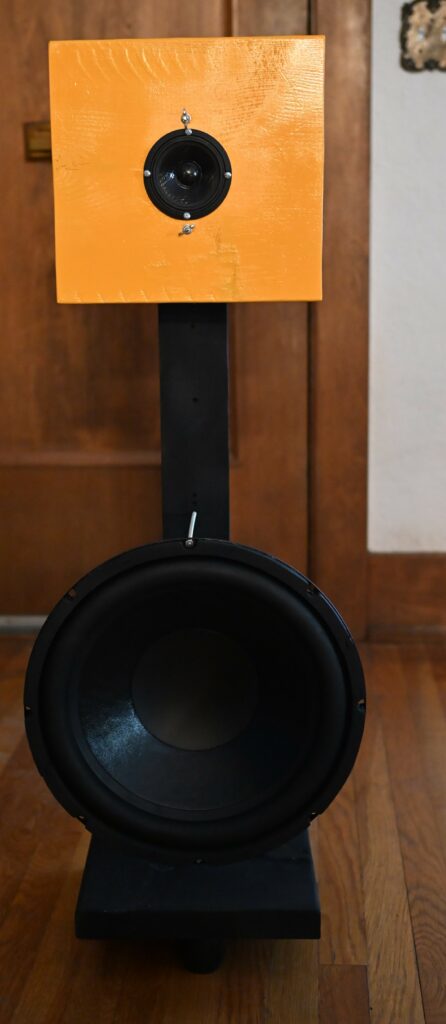
Designer:
Jose Sasian
Project Category:
Loudspeakers/Cabinets
Project Level:
Beginner
Project Time:
8-20 Hours
Project Cost:
$100-$500
Project Description:
A two way Dipole speaker system that uses a 15” woofer and a 4” full range driver. It is powered by two subwoofer amplifies, a mini solid state amplifier, and a graphical equalizer.
Design Goals:
This project is an upgrade of an earlier dipole project (http://www.claudionegro.com/projects/speaker/dipole/dipole.html ) and the goals are to improve sound stage imaging, bass coverage, midrange performance, and physical appearance.
Driver Selection:
The woofer is a high excursion 15” subwoofer to be able to move a large amount of air and produce good bass to at last to 50 Hz. The full range driver is 4” in size and also has a linear large excursion of 4 mm. In a dipole speaker is important to use large excursion drivers to help avoid damaging the driver, and to reduce spider and surround noises.
Enclosure Design:
This is a pedestal type driver mounting to minimize resonances and minimize package. It consists of a pine wood board base of 11”X12”X1 ½ “, in which a wooden pole 3”X4”X40” is attached. The drivers are mounted on the pole. The weight of the woofer is supported by two screw pegs attached to the pole, and two 3/16” threaded rods secure the woofer against the pole.
The full range driver is mounted on a pine wood board 11”x12”X 1 ½”, that is held to the pole with two threaded rods allowing a space of 3” between the pole and the board; this helps to mechanically decouple the board from the pole due to the low stiffness of the threaded rods. The bottom base has three hard rubber feet of 1 1/2 “ height to help decouple the speaker from the hard wood floor.
Crossover Design:
There are no crossovers. The woofers are directly connected to the subwoofer amplifier that is adjusted for a passband at 200 Hz. The graphical equalizer along with the full range pine board allow to flatten the SP. The equalizer also serves as a long pass filter to protect the driver from low frequency, high amplitude content. The equalizer feeds the mini amplifier which in turn feeds directly with no crossover the full range drivers.
The cross over point is at about 200 Hz and this was lowered as much as possible to secure the full range driver managing the human voice range and beyond coherently. In addition, the full range driver was minimized in size to help pinpoint imaging.
The SPL due to both speakers, left and right, at the sitting position is shown in the figures, and also the SPL due to only one full range driver.
A photo below shows the setting of the equalizer.
Tips & Tricks:
Here it is a procedure that helps to have a well adjusted speaker system for pinpoint imaging.
A) Define several ranges of 1/3 octave white noise in REW; say 63 Hz, 125 Hz, 250 Hz, 500 Hz, 1000 Hz, 2000 Hz, 4000 Hz, and 8000 Hz.
B) Listen to the phantom image produced with the white noise at 8000 Hz. It should be centered midway between the speakers. If not check the balance, room symmetry, etc. The phantom image asymmetry might be to sound reflections; separating the speaker from the side walls helps. The phantom image should remain centered when leaning closer and away from the speakers, if it drifts when leaning away from the speakers is likely due to a reflection.
Note also that turning the head left to right makes the phantom image move also sideways; this movement of the phantom image needs to be symmetrical.
C) Check for symmetry for the rest of the frequency ranges of 1/3 octave white noise.
D) Note that at about 3 KHz and when turning the head left to right the phantom image splits into a stationary image due to lower frequency content in the white noise, and into an image that shifts left to right due to higher frequency content in the white noise.
E) Note that when the white noise frequency lowers, the phantom image also lowers in physical height. In some speaker systems the phantom image remains relatively low in height even a higher frequencies like 1000-2000 Hz.
Conclusion:
This speaker system produces outstanding transparency and sound stage imaging. Sound reproduction is amazing as one wants to stay listening to it.
About the Designer:
Jose Sasian is professor of optical sciences at the Wyant College of Optical Sciences at the University of Arizona. He has been bitten by the bug of high fidelity music reproduction. He lives in Tucson, Arizona.
Project Parts List:
| Part# | Description | Qty. |
| 300-3805 | Dayton Audio DTA-100LF Desktop Subwoofer/ Bass Shaker Amplifier with EQ | 2 |
| 292-822 | GRS 15SSW-4HE 15″ High Excursion Super Subwoofer 4 Ohm | 2 |
| 245-882 | ART EQ-341 Dual 15-Band 2/3 Octave Graphic EQ | 1 |

+ There are no comments
Add yours